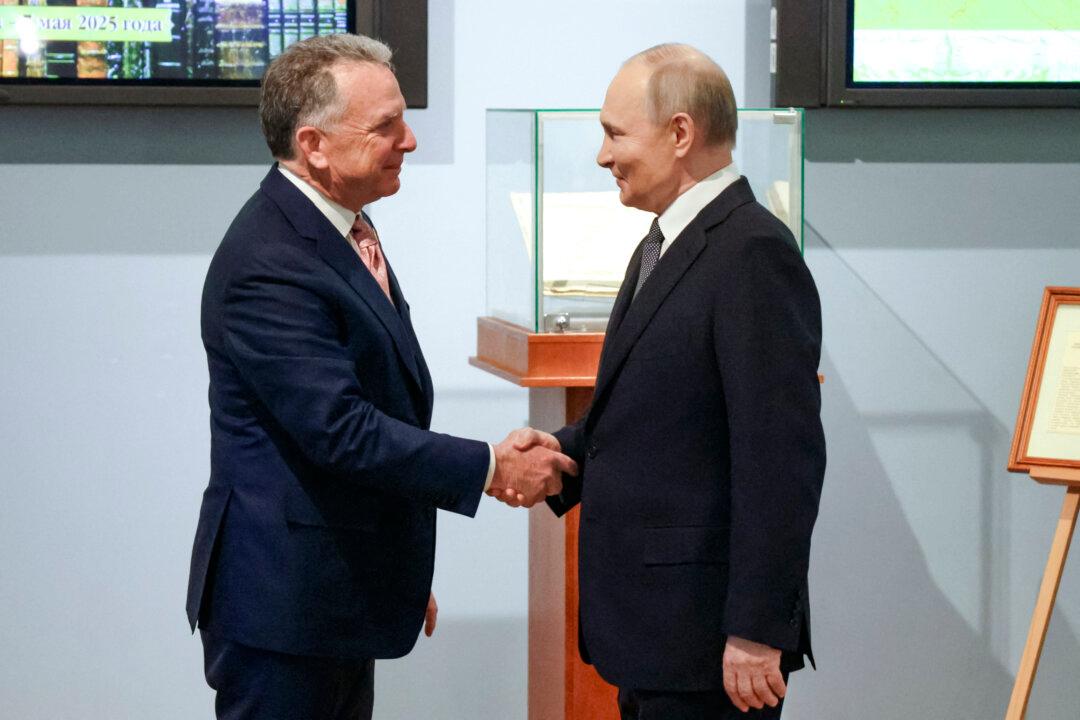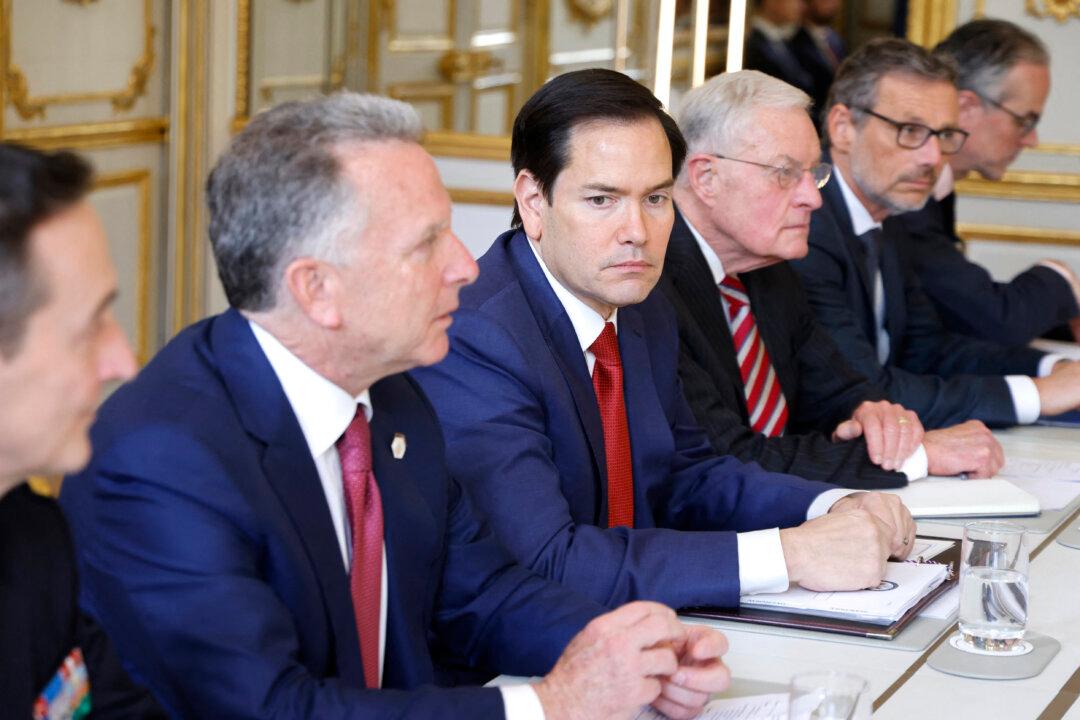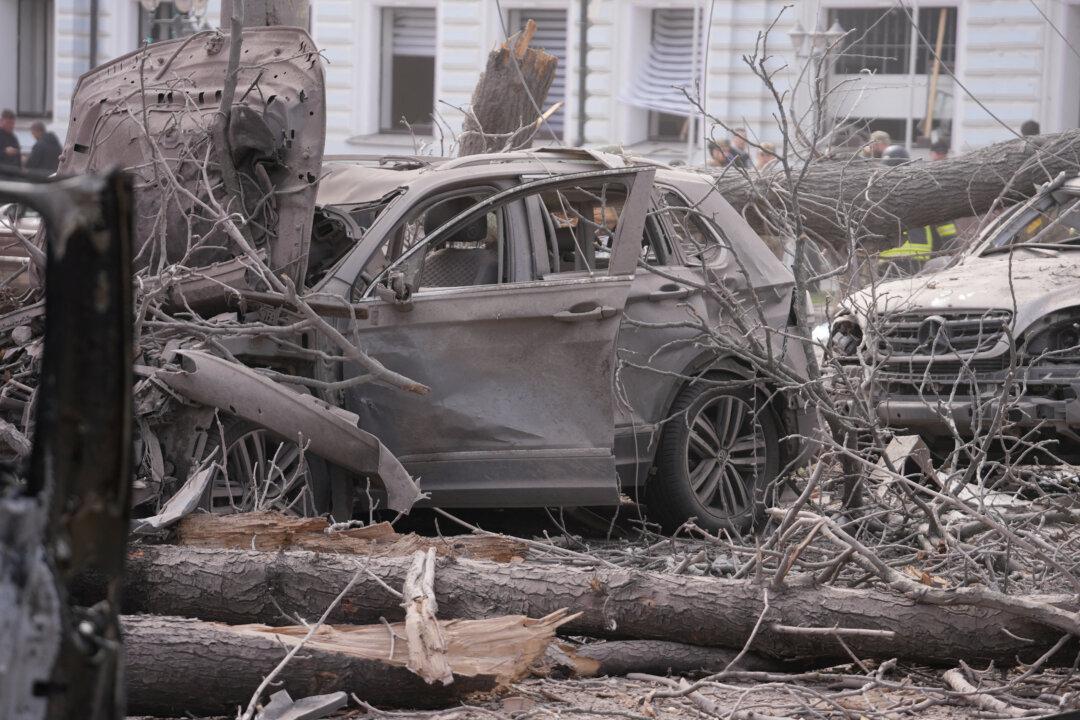Almost one month since Kyiv launched a long-awaited counter-offensive aimed at retaking Russian-held territory, Ukrainian forces have yet to register significant gains, according to both Western and Ukrainian officials.
“The counter-offensive … is difficult,” Admiral Rob Bauer, a Dutch naval officer who also serves as chairman of NATO’s military committee, said on July 3.
“People should never think that this [counter-offensive] is an easy walkover,” he told reporters at the alliance’s Brussels headquarters.
For months, Kyiv and its Western allies had promised a robust counter-attack aimed at “liberating” territory previously captured by Russia.

Drone footage shows armored vehicles on the move in an unidentified location after the Defence Ministry in Moscow said that Russian forces have thwarted a major Ukrainian offensive in Donetsk, released on June 5, 2023. Russian Defence Ministry/Handout via Reuters
But since the counter-offensive began early last month, Ukrainian forces have only managed to retake some 50 square miles in the Donetsk and Zaporizhzhia regions, according to officials in Kyiv.
This is only a tiny fraction of the total territory captured by Russia, which last September effectively annexed Donetsk and Zaporizhzhia, along with the neighboring regions of Luhansk and Kherson.
Last week, top U.S. army general Mark Milley, chairman of the Joint Chiefs of Staff, said that Kyiv’s counter-offensive was “advancing steadily, deliberately ... 500 meters a day, 1,000 meters a day, 2,000 meters a day.”
But he also warned against expectations of any dramatic breakthroughs—at least in the short term.
“This is going to take six, eight, 10 weeks; it’s going to be very difficult,” Milley told the National Press Club in Washington on June 30.
“It’s going to be very long, and it’s going to be very, very bloody,” he added. “No one should have any illusions about any of that.”
Like NATO’s Bauer, Milley attributed the counter-offensive’s slow pace to deeply-entrenched Russian lines of defense, which include minefields, trenches, and a host of other fortifications and barriers.
On June 30, Hanna Maliar, Ukraine’s deputy defense minister, insisted that the counter-offensive was proceeding “according to plan.”
“We have seized the strategic initiative and are advancing in all directions,” she said in televised comments.
But even Ukrainian President Volodymyr Zelenskyy—known for his rosy battlefield assessments—has recently admitted that Kyiv’s vaunted counter-offensive was moving “slower than desired.”
‘Suicidal’ Offensive
Moscow, meanwhile, says that Kyiv’s limited gains are being exaggerated and that Ukrainian forces are taking massive losses in terms of both men and equipment.On July 3, Russian Defense Minister Sergey Shoigu asserted that Kyiv had failed to achieve its goals “in any sector” along the roughly 620-mile frontline.
“The enemy has not achieved its objectives in any of the frontline sectors,” he said during a conference call with Russian field commanders, according to Russia’s TASS news agency.
Shoigu attributed Kyiv’s alleged failures to “the skill of our fighters and the clearly exaggerated expectations from much-touted Western weapons.”
Since the counter-offensive began one month ago, 15 Ukrainian aircraft, three helicopters, and 920 pieces of offensive equipment had been destroyed in Donetsk and Zaporizhzhia alone, Shoigu claimed.
He added that all 16 German-made Leopard tanks—recently given to Ukraine by Poland and Portugal—had been neutralized by Russian drones and artillery.

A Ukrainian tank rolls on a road near Bakhmut, in the Donetsk region, on Nov. 30, 2022, amid the Russian invasion of Ukraine. Anatolii Stepanov/AFP via Getty Images
The Epoch Times was unable to verify Shoigu’s assertions, which echoed earlier claims by top Russian officials.
Speaking before the UN Security Council late last month, Vasily Nebenzya, Moscow’s envoy to the world body, described Kyiv’s ongoing counter-offensive as “suicidal.”
“It has already cost them [the Ukrainians] tens of thousands of mobilized men and several hundred pieces of armored hardware,” Nebenzya said on June 23.
He compared the ongoing counter-offensive to the months-long fight for Bakhmut, where, he alleged, Kyiv had “sent Ukrainian soldiers to their deaths … just to prove to Western arms suppliers that Ukraine could defeat Russia.”
A key transport hub in Donetsk, Bakhmut (Artyomovsk in Russian) was captured in May by Russian forces following nine months of bloody ground fighting.
NATO Bid in Doubt
Kyiv, meanwhile, is hard-pressed to register gains on the battlefield before an upcoming NATO summit scheduled for next week.At the event, which will be held in Vilnius, Lithuania, on July 11 and July 12, Ukraine hopes it will be formally invited to join the 31-member military alliance.
Ukraine officially applied for full-fledged NATO membership on Sept. 30 of last year—the same day that Moscow announced its controversial annexations.
“This application is now on the tables of the leaders of NATO allies,” Ihor Zhovkva, Zelenskyy’s chief diplomatic adviser, said on June 29.
The Vilnius summit, Zhovkva added, “would be a very good start to respond to this application. And by respond, we mean an invitation for membership.”
But some Western leaders—fearing the potential for wider conflict—say Ukraine cannot join the alliance as long as it remains in a state of war.
On July 3, Peter Szijjarto, Hungary’s foreign minister, said the notion of Ukraine being invited to join NATO at the Vilnius summit was “out of the question.”
“Membership [in NATO] for a country at war cannot be discussed,” he was quoted as saying by TASS. “This issue cannot be included on the [summit’s] agenda.”
Szijjarto went on to assert that many of his European counterparts felt the same way and “say the same thing in private.”
Reuters contributed to this report.





